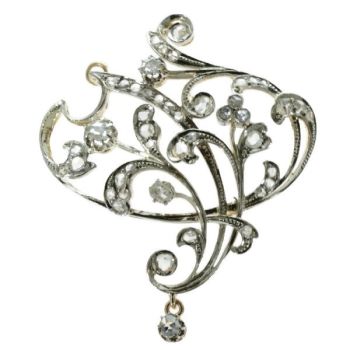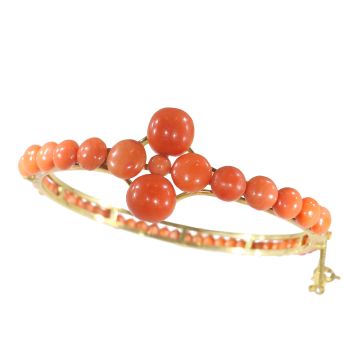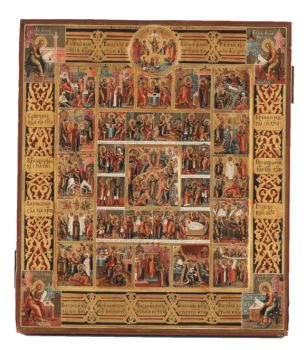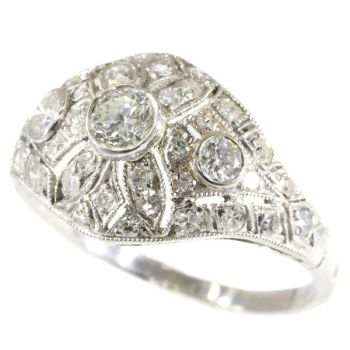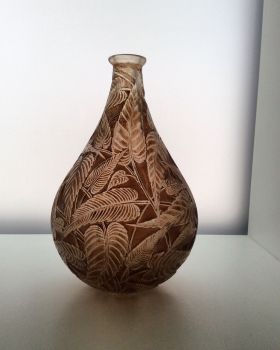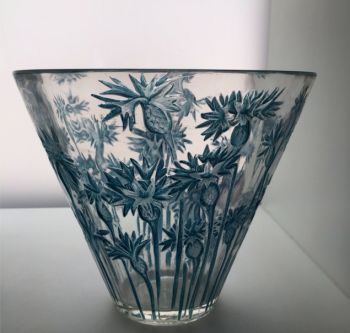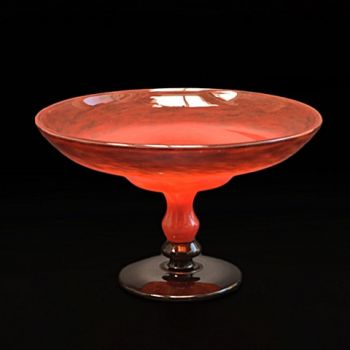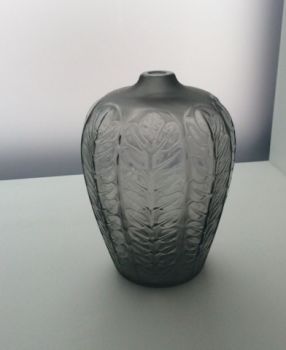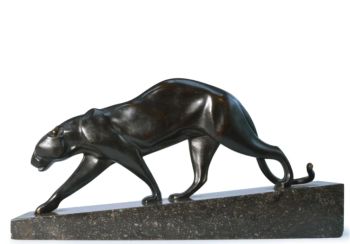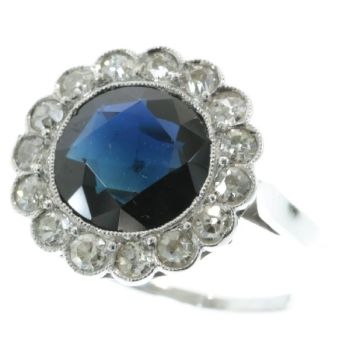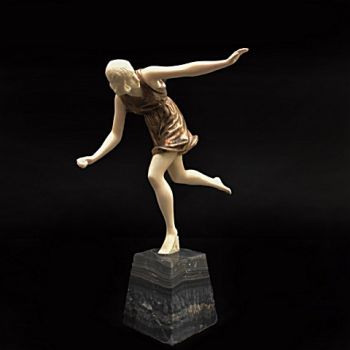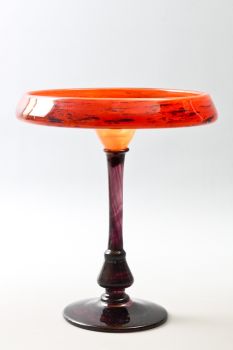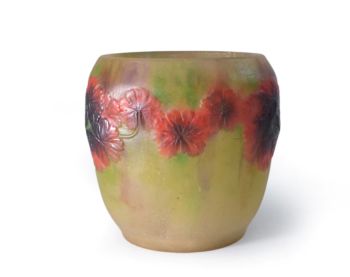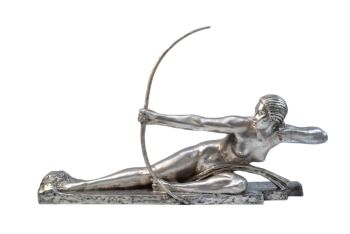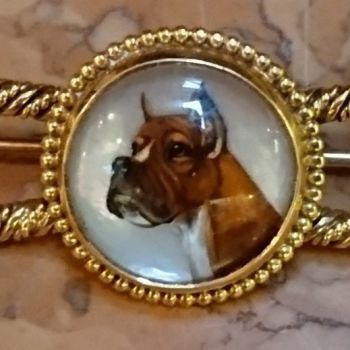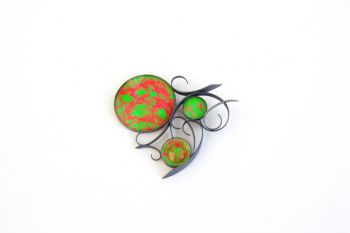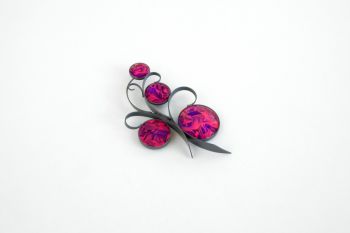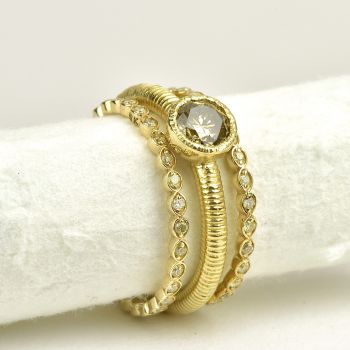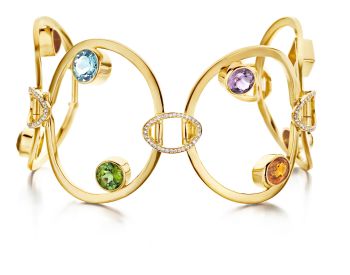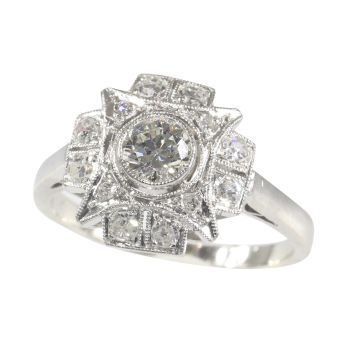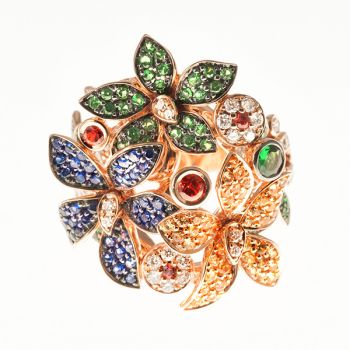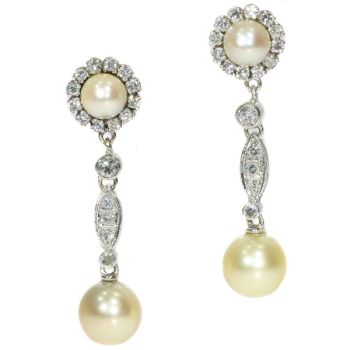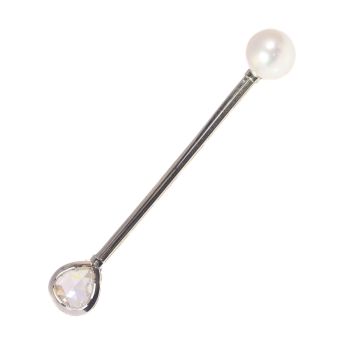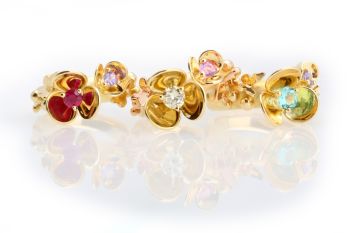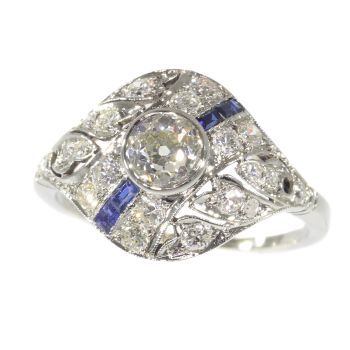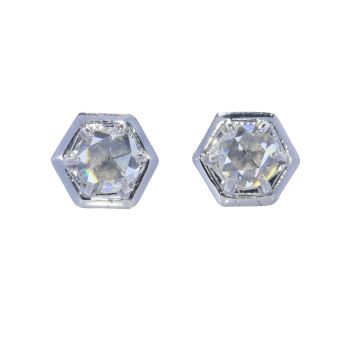Broche française Art Déco dite tutti frutti avec diamant émeraude saphir 1920
Artiste Inconnu
diamantémeraudeSaphirGemme
€ 14.000
Adin Fine Antique Jewellery
- Sur l'oeuvre d'art
Antique jewelry object group: brooch
Condition: very good condition
- (more info on our condition scale)
Country of origin:France
Style: Art Deco - Art Deco is an eclectic artistic and design style which had its origins in Paris in the first decades of the 20th century. The style originated in the 1920s and continued to be employed until after World War II. The term "art deco" first sawwide use after an exhibition in 1966, referring to the 1925 Exposition Internationale des Arts Décoratifs et Industriels Modernes that was the culmination of high-end style modern in Paris. Led by the best designers in the decorative arts such asfashion, and interior design, Art Deco affected all areas of design throughout the 1920s and 1930s, including architecture and industrial design, as well as the visual arts such as painting, the graphic arts and film. At the time, this style was seen aselegant, glamorous, functional and modern.
- See also: Art Decoor more info on styles
Style specifics: Abstract motives and geometrical forms are quite typical for the Art Deco period. Art Deco moved away from the soft pastels and organic forms of its style predecessor, Art Nouveau, and embraced influences from many different styles and movements of the early 20th century, including Neoclassical, Constructivism, Cubism, Modernism, and Futurism. Its popularity peaked in Europe during the Roaring Twenties and continued strongly in the United States through the 1930s. Although many design movements havepolitical or philosophical roots or intentions, Art Deco was purely decorative.
Period: ca. 1920
- (events & facts of this era, poetry of this era, fashion of this era)
Source of inspiration: Mother Nature
Material: The brooch is in platinum and the pin in 18K white gold (as normal in that era and hallmarked as such)
- (more info on precious metals)
Extra information: Tutti Frutti - Jewelry like this, set with brightly colored gemstones polished as leaves are called "Tutti Frutti jewelry". The first Tutti Frutti piece was a necklace commissioned by Queen Alexandra and designed by Pierre Cartier in 1901. Tutti Fruttijewel designs are considered to be a perfect mix of East and West because they are made up of brightly colored gemstones (like sapphires, rubies and emeralds) carved using Indian techniques and set in French platinum and diamond mountings.The stylebecame extremely popular during the 1920's, but it wasn't named 'Tutti Frutti' until 1970.
Diamonds:42 old brilliant cut diamonds with a total estimated weight of approx. 2.94 crt. (approximate color and clarity G/J, vs/si)and ten smaller old brilliant cut diamonds with a total estimated weight of approx. 0.15 crt.
Note: All diamond weights, color grades and clarity are approximate since the stones were not removed from their mounts to preserve the integrity of the setting.
Total diamond weight: approx. 3.09 crt.
Precious stones: Four sapphires andthree emeralds, all polished and engraved as leaves.
- (more info on precious stones)
Birthstones: Diamond is the birthstone (or month stone) for April, sapphire for September and emerald for May.
- (more info on birthstones)
Makers mark: The makers hallmark is eligible although we think we recognize the letter C as part of this hallmark.
Hallmarks: The French control marks representing an eagle’s head (that was in use in France from about 1838) next to the dog's head which is the official French hallmark for jewelry containing or made of platinum and that has been used since 1912..
- (more info on hallmarks)
Dimensions: 2,88 cm (1,13 inch) x 2,78 cm (1,09 inch)
Weight: 9,30 gram (5,98 dwt)
Reference Nº: 16123-0060
Copyright photography: Adin, fine antique jewelry
- Sur l'artiste
Il peut arriver qu'un artiste ou un créateur soit inconnu.
Certaines œuvres ne doivent pas être déterminées par qui elles sont faites ou elles sont faites par (un groupe d') artisans. Les exemples sont des statues de l'Antiquité, des meubles, des miroirs ou des signatures qui ne sont pas claires ou lisibles, mais aussi certaines œuvres ne sont pas signées du tout.
Vous pouvez également trouver la description suivante :
•"Attribué à …." A leur avis probablement une oeuvre de l'artiste, au moins en partie
•« Atelier de …. ou « Atelier de » À leur avis, une œuvre exécutée dans l'atelier ou l'atelier de l'artiste, éventuellement sous sa direction
•« Cercle de… ». A leur avis une oeuvre de la période de l'artiste témoignant de son influence, étroitement associée à l'artiste mais pas forcément son élève
•« Style de … ». ou "Suiveur de ...." Selon eux, une œuvre exécutée dans le style de l'artiste mais pas nécessairement par un élève ; peut être contemporain ou presque contemporain
•« Manière de… ». A leur avis une oeuvre dans le style de l'artiste mais d'une date plus tardive
•"Après …." A leur avis une copie (quelle qu'en soit la date) d'une oeuvre de l'artiste
•« Signé… », « Daté… ». ou « Inscrit » À leur avis, l'œuvre a été signée/datée/inscrite par l'artiste. L'ajout d'un point d'interrogation indique un élément de doute
• "Avec signature ….", "Avec date ….", "Avec inscription …." ou "Porte signature/date/inscription" à leur avis la signature/date/inscription a été ajoutée par quelqu'un d'autre que l'artiste
Êtes-vous intéressé par l'achat de cette oeuvre?
Related artworks
Artiste Inconnu
GRANDE PEINTURE INDIENNE IMPORTANTE ET RARE `` STYLE D'ENTREPRISE '' SUR IVOIRE REPRÉSENTANT UN DÉFI1850 - 1900
Prix sur demandeZebregs & Röell - Fine Art - Antiques
 Sélectionné par
Sélectionné parDanny Bree
Artiste Inconnu
UITGEBREIDE FEESTDAGENIKOON MET PASSIECYCLUS19th century
Prix sur demandeHeutink Ikonen
1 - 4 / 12René Lalique
Un ancien vase 'Bluets' conçu par René Lalique (1860-1945)1910 - 1920
Prix sur demandeLennart Booij Fine Art and Rare Items
1 - 4 / 24- 1 - 4 / 24
Artiste Inconnu
Un rare filigrane un gobelet retortoli1550 - 1600
Prix sur demandePeter Korf de Gidts - Antiquairs
1 - 4 / 24- 1 - 4 / 24
- 1 - 4 / 12












